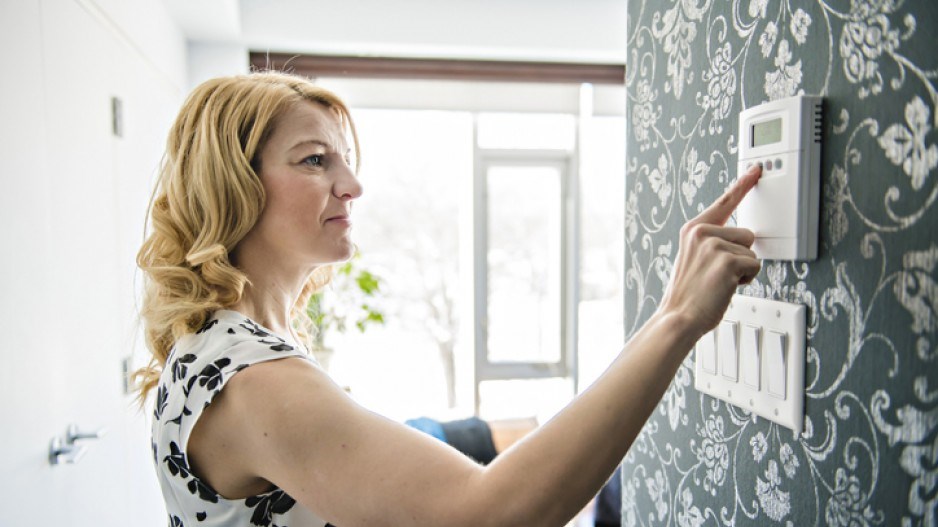This winter has been particularly draining for many Canadians.
Many hoped to have an opportunity to travel to warm destinations, only to see the latest developments in the COVID-19 pandemic make those trips impossible. With lockdowns affecting activities in all provinces and territories, we are spending more time at home on weekdays and weekends.
Over the past few weeks, we have studied issues such as noise and music in Canadian households. This time, we wanted to see if the pandemic has altered the way we consume energy at home.
Across Canada, 45% of residents told Research Co. and Glacier Media that their energy and heating use at home has increased over the past few weeks, down four points since we last asked in November 2018.
Just 13% of Canadians (down two points) say that they are using less energy now when they are inside their homes, while just under half (45%, up seven points) report no change in their energy consumption.
In spite of the presence of COVID-19, this winter has featured the return of two usual traits on social media among Canadians: comparisons of “highs and lows” in cities across the country aimed at eliciting chuckles from followers and a distorted analysis of climate change based on what the thermometer shows in specific areas of the country.
The way in which Canadians are using energy this winter flows from west to east in perfect form. British Columbians are more likely to acknowledge that their heating use has increased recently (44%), in spite of not having to face the extremely low temperatures of other jurisdictions across Canada.
The proportion of Canadians who are relying on home heating more drops slightly to 40% as we move through Alberta, Saskatchewan and Manitoba, and to 39% in Ontario. The lowest numbers on this question are recorded in Quebec (28%) and Atlantic Canada (also 28%).
The personal preferences of Canadians when it comes to the ideal temperature at home also saw some minor fluctuations. At the bottom end of the scale, 12% of Canadians (up three points) say they set their thermostat at 18C or lower. One third (33%, up five points) pick 19C or 20C.
The preferred temperatures for a plurality of Canadians continue to be 21C or 22C (39%, down one point) while one in 10 (10%, up four points) go at the higher end, with the home heated at 23C or higher.
These numbers are not immovable, especially for those who are married or living with a significant other. Across the country, half of Canadians who cohabit with their partner (49%) say that agreeing on the temperature at home is a joint effort. Just over one in four of these respondents (26%) say they are solely responsible for the thermostat, while a slightly smaller proportion (23%) leave this decision in the hands of their spouse or partner.
Not all regions of the country believe in thermostat equality inside the home. Majorities of Canadians who live in Saskatchewan and Manitoba (61%), Alberta (58%), Atlantic Canada (56%) and British Columbia (53%) say that the home temperature is decided by two people. Only 46% of Ontarians and 41% of Quebecers follow the same guidelines.
How we decide the temperature is one thing. How we behave when our partner is not looking is an entirely different proposition. In spite of the seemingly easygoing nature of Canadians when it comes to the thermostat, there are some who try to unilaterally and surreptitiously distort the process.
This year, 39% of Canadians who cohabit acknowledge that they change the temperature at home without telling their spouse or partner “all of the time” or “most of the time.” This represents a nine-point increase in stealthy activity since 2018 and coincides with Canadian couples sharing more time than ever inside the family home because of the pandemic
The gender differences on this question are noticeable. While 45% of women admit that they change the temperature “all of the time” or “most of the time,” only 34% confess to the same behaviour. Men are also more likely to claim that they “never” touch the thermostat without asking their partner (28%) than women (22%).
As technology evolves, so does the opportunity to fiddle with a process that used to be controlled manually and mechanically. Modern applications allow people to set their home temperature with the help of a smartphone, making it even easier for those who choose not to discuss the situation with their partner to get away with setting a higher or lower temperature at will.
Mario Canseco is president of Research Co.
Results are based on an online survey conducted from January 30 to February 1, 2021, among 1,000 adults in Canada. The data has been statistically weighted according to Canadian census figures for age, gender and region in Canada. The margin of error, which measures sample variability, is plus or minus 3.1 percentage points, 19 times out of 20.




